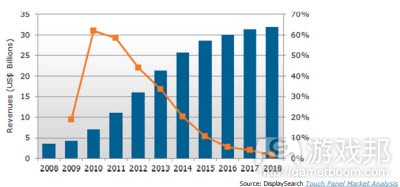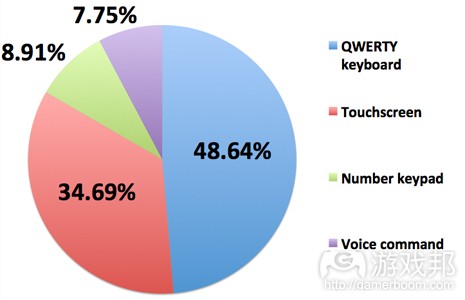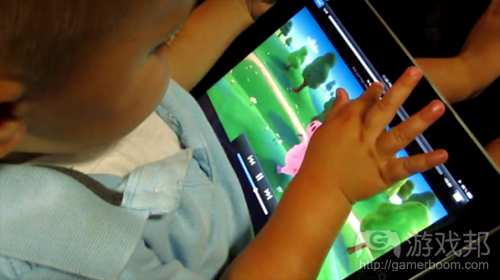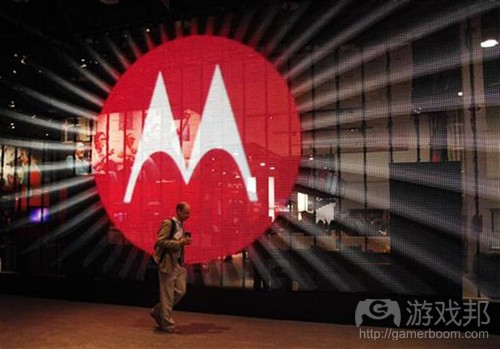每日观察:关注触屏组件市场规模及用户支持率(8.14)
1)DisplaySearch最近报告预测,2012年触屏组件市场规模将达160亿美元,2018年这一数据将增长至319亿美元。
DisplaySearch副总裁Jennifer Colegrove表示,目前有200多家供应商进入触屏组件市场,并提供12种不同类型的触屏显示器。2009年该市场规模为43亿美元,2011年达110亿美元。但在2012年这一市场的触屏组件供货量超过实际需求的27%,以致供应商不得不压价参与市场竞争。
2)诺基亚博客Conversations by Nokia最近一项调查结果显示,该博客48%以上读者认为标准键盘操作方式比触屏和声控操作方式更好。
在这些受访者中,瑞典、英国、芬兰和德国用户多支持标准键盘,而美国用户则偏爱触屏(支持率为47%)。但从整体上看,最受欢迎的是标准键盘,其支持率达48.64%;其次才是触屏操作方式,支持率为34.69%。
3)NPD Group最近调查报告显示,多数4-14岁少儿用户在专门的游戏设备上投入的时间多于其他电子设备。不过他们对平板电脑使用率增幅最大,从2011年的3%增至2012年的13%。
NPD行业分析副总裁Russ Crupnick指出,儿童群体使用平板电脑玩游戏,观看影视节目,看书和听音乐。更年长的少儿用户在电脑和视频游戏上投入时间更多,而年纪较小的少儿群体使用平板电脑玩游戏的比例更高。
调查结果表明,比起平板电脑,便携式游戏系统在少儿群体中的持有率更高。若苹果今年如期推出传说中的iPad mini,平板电脑则有望进一步缩小与手持掌机设备之间的这种差距。
4)据insidemobileapps报道,TinyCo日前宣布将在加拿大温哥华成立一个60人工作室(游戏邦注:在此之前Gameview和GREE新工作室也相继落户加拿大)。
该公司首席执行官及联合创始人Suli Ali表示他们选择温哥华的原因包括,温哥华与TinyCo公司处于同个时区,并有直达航班,此外它也是适宜旧金山人士居住的地方,而更重要的是当地有许多人才可挖掘。
目前该工作室已有三名温哥华员工,计划在未来扩招包括程序员、美术设计师、工程师、数据分析师、QA人员及产品经理等60名成员,并使用TinyCo跨平台引擎Griffin开发iOS和Android游戏。
5)据pocketgamer报道,美国初创公司PerBlue首席执行官Justin Beck在最近的GDC Europe大会上介绍了公司发展历程及项目运营情况。
PerBlue是由一群大学生创办的公司,成立已有三年。该公司首款游戏《Parallel Kingdom》历时12个月开发周期,但最后却并没有发布,还削减了95%的预期功能,因为他们没有控制好项目范围和制作成本。
PerBlue最终通过向亲友筹款7.2万美元,并出让了公司的一小部分股权而发布了游戏。目前该公司地理定位游戏每月收益约20万美元(其中多数来自《Parallel Kingdom》),但游戏下载量仅为150万次,并且只有1.5万DAU和5万MAU。不过其每用户日益收益达40-50美分,每个用户平均终身价值达3.25美元(超过12个月),平均每名付费用户终身价值为95美元。
《Parallel Kingdom》用户男女比例为70:30,Android和iOS用户比例为85:15。
6)独立开发商Polytron最近通过Twitter发贴指出,Zynga有意将Polytron热门游戏《Fez》移植到移动平台,但他们婉绝了Zynga的合作请求,并声称也许Zynga某人将发布一款自己的“FEX”山寨游戏。
观察者指出,Polytron这条消息不禁令人回想起NimbleBit在今年初与Zynga发生的不快,据称Zynga当时有意收购NimbleBit但被后者拒绝,之后Zynga就推出一款神似《Tiny Tower》的克隆游戏。Polytron现在提前放出风声,或许意在防止自己的游戏也遭遇被Zynga模仿的命运。
7)据谷歌向美国证券交易委员会(SEC)提交的文件显示,谷歌旗下手机制造商摩托罗拉将裁员4000人(占比20%),其中三分之二属于美国海外员工。
文件还指出摩托罗位计划关闭或合并全球90个办事处中的三分之一,并将业务重心从功能性手机转向更具创新性和盈利性的设备。本次裁员行动意在使摩托罗拉移动设备部门扭亏为盈。
谷歌于一年前以125亿美元高价收购摩托罗拉,预计本次裁员举措将使谷歌面临2.75亿美元的开支,其中多数于第三季度兑现,其余款项于今年底兑现。(本文为游戏邦/gamerboom.com编译,拒绝任何不保留版权的转载,如需转载请联系:游戏邦)
1)Touchscreen displays will become a $31.9B market by 2018
Dean Takahashi
The touchscreen revolution in display user interfaces has been going strong since Apple introduced the iPhone in 2007. Today, it shows no sign of stopping, and the market for touchscreen modules is expected to double from $16 billion in 2012 to $31.9 billion in 2018.
That bullish forecast comes from DisplaySearch, which is holding its Emerging Displays conference today and tomorrow in Santa Clara, Calif. It means that the touchscreen technology market is full of opportunities for hardware and software companies that are part of the huge $200 billion-plus display ecosystem, said Jennifer Colegrove (pictured above), the vice president of display technologies at DisplaySearch, in the opening talk at the event. But the market can be treacherous because of its cycles of overcapacity and commoditization that happen over time.
More than 200 suppliers have entered the market, providing technology in 12 different categories of displays. The aging resistive touchscreen technology still has 97 suppliers, up from 64 in 2009 — all providing screens that can detect touches from any kind of object well but are not really meant for multifinger touches. Projected capacitive screens, which have risen dramatically due to the popularity of multitouch (which uses multiple fingers on a screen), has grown from 27 suppliers in 2009 to 102 in 2012.
As you can probably guess, it’s hard to make money in the display business with so many suppliers. The overall display industry still loses tens of billions of dollars a quarter, particularly due to the saturation of flat-screen TVs, said Jeff Han (pictured at top), founder of Perceptive Pixel, a big-touch-display pioneer. Han’s company was formally acquired by Microsoft a couple of weeks ago to work on new display technologies.
After his talk, Han asked a panel of speakers, “Where is the best place to be to make profits in the industry?”
Colegrove said that the touchscreen module business was $4.3 billion in 2009 and was $11 billion in 2011. But in 2012, there is a 27 percent oversupply for the overall touchscreen module industry. That means there is too much manufacturing capacity compared to demand. So the result is downward pressure on prices for the touchscreen suppliers.
The suppliers include companies such as Corning, which makes the sturdy Gorilla Glass used in displays. Others include “cover lens finishing” suppliers such as Fuji Crystal. Others
provide materials such as indium tin oxide glass and film components. And there are makers of touchscreen controller chips such as Atmel, Synaptics, Cypress, EETI, and Elan. The latter companies make chips that are smart enough to deal with noise problems such as a user’s unintentional palm touch on a screen.
All of these suppliers are in search of better large-screen applications of touch. Today, there are 24 major applications for touchscreens. The biggest are smartphones, tablet computers, and laptops.
Colegrove said that projected capacitive technology has probably hit its peak and new technologies will supplant it. Those include putting the sensor for touch on the cover, or a third piece of glass that protects the actual screens that sandwich lighting materials in a liquid crystal display. Other methods include in-cell and on-cell technologies that, like sensor-on-cover, reduce the cost, thickness, and weight of touchscreens.
Han said he sees a big future in “premium experiences” with touch technology, such as high-quality collaboration systems where enterprise workers share documents.
He said Microsoft’s Windows 8 operating system coming this fall will enable touchscreens in a big way, allowing desktop PCs, notebooks and tablets to embrace touchscreen technologies that are more precise than in the past. He believes that the future of touch will be a combination of finger-touches on a screen as well as pen touches. You could, for instance, work on a desktop-size display. You could move the position of a virtual paper with your left hand and then draw pictures or trace images using your right hand.(source:venturebeat)
2)Nokia fans still prefer Qwerty
by Mike Shaw
Nearly 50 per cent of respondents favour Qwerty over the likes of touchscreens and number keypads.
There are still a lot of people out there who prefer a Qwerty keyboard to touchscreen.
A poll by the official Nokia blog Conversations by Nokia has revealed that more than 48 per cent of its readers prefer Qwerty over alternatives liketouch screens and voice command.
The results are even more revealing when broken down by country.
While European countries like Sweden, the UK, Finland and Germany were representative of the poll as a whole, voting overwhelmingly for Qwerty, the US preferred the touchscreen, with 47 per cent of the votes.
However, for the most part, Qwerty is king, with one person saying “I definitely prefer the QWERTY keyboard, by a country mile. You can’t beat it for accuracy or response.”(source:mobile-ent)
3)Sorry, iPad, kids still like their handheld consoles more than you
Jeffrey Grubb
It may feel like everywhere you look a baby is playing on an iPad (or is that just me?), but the truth is that kids are still far more likely to have a Nintendo 3DS or a PlayStation Vita.
According to a study by market-research company The NPD Group, children ages 4 to 14 still spend most of their consumer-electronics time with dedicated gaming machines. Media tablets, however, experienced the highest rate of growth from 2011 to 2012, with a 13 percent boost this year compared to 3 percent in the previous period.
“Kids are using tablets to game, watch movies and TV shows, read books, and listen to music,” said senior vice president of industry analysis for The NPD Group, Russ Crupnick. “They have embraced the utility of these devices quite rapidly.” Meanwhile, my VCR is still blinking “12:00.”
The study discovered that while older kids are likely to spend more of their time with computers and video games, tablet use is the highest on the younger side of the spectrum. That makes sense, as young kids always seem to want to play with the thing their parents are holding.
Kids are still most likely to own a portable gaming system than a tablet. If Apple does introduce a smaller, less expensive iPad this year (as is rumored), expect the gap between tablet and handheld console to tighten considerably.(source:venturebeat)
4)TinyCo to set up not-so-tiny 60 person studio in Vancouver B.C.
Kathleen De Vere
TinyCo has announced it will open new, standalone studio in Vancouver, British Columbia. TinyCo is the latest in a growing series of San Francisco-based game companies to set up north of the border, following in the footsteps of Gameview Studios and GREE.
According to TinyCo CEO and co-founder Suli Ali, the company chose Vancouver for a variety of reasons. “It’s in the same time zone that we operate in, there are short direct flights to get there,” he explains. “It’s [also] a desirable place for people from San Francisco to live, but most importantly, we’ve got a real depth of talent that we really want to go into and recruit against.”
Ali tells us that although TinyCo is still in the process of finalizing its new office space, the company already has its first three Vancouver employees on board. Over the next six months, the company plans to increase headcount at TinyCo Vancouver to 60 people, including programmers, artists, engineers, data analysts, QA staff and product managers. The team will be building games for both iOS and Android using TinyCo’s cross-platform Griffin engine.
TinyCo is not revealing how much money it’s spending to set up the new studio, but the company is backed by $18 million in Series A funding from Andreessen Horowitz.(source:insidemobileapps)
5)GDCE 2012: PerBlue’s Justin Beck on building a $3M revenue company on 15,000 DAUs
by Jon Jordan
Kicking off GDC Europe in Cologne, Germany, was Justin Beck, CEO of US start up PerBlue.
A specialist in location-based mobile games, Beck spoke about the process by which a bunch of college kids built a thriving game company in three years, under the title Bootstrapping 101.
Don’t show me the money
One of the most early decisions PerBlue made was to turn down an initial $30,000 investment.
“They wanted 10 percent share of company, with preferred stock plus one board seat. But most importantly, I didn’t trust them in terms of working with the company long-term,” Beck
explained.
Another early problem was Beck had been offered a good job with Microsoft.
Up to this point, he had been working 8 hours as an intern at Microsoft and working on PerBlue’s first game Parallel Kingdom in his downtown.
“It was a lack of focus and a lot of stress,” Beck explained.
Yet he argued that too often people consider getting relatively well-paid jobs at the cost of longterm happiness.
“The opportunity cost of me not joining Microsoft was zero,” he explained.
“You can always get a job at Microsoft. But I had an opportunity to make a mobile game, and a team committed to making a mobile game.”
Hard decisions
Yet, the process of making Parallel Kingdom wasn’t easy. After 12 months of development, the game wasn’t shipped. This resulted in 95 percent of the desired features being cut.
“The easiest way to kill your company is not controlling scope, and that means controlling costs,” Beck argued.
Indeed, even with this decision in place, the company still need money to launch the game. It decided to raise money from friends and family, eventually selling a small percent of the company for $72,000.
Another important part of shaping the company at this early stage was rewarding the early staff, who were granted stock options based around time worked.
“It’s got to be a great deal for the company and employees,” Beck said.
On the up
Eventually, the company did its first proper investment round; looking to raise $300,000 but eventually raising $800,000 to expand the business, giving away a larger share of the company compared to friends and family round.
This is mainly from midwest investors: PerBlue is based in Madison, WI.
And it’s growing fast.
PerBlue currently generates around $200,000 of monthly revenue from its location-based games, mainly Parallel Kingdom.
However, it’s only had 1.5 million downloads (“a vanity metric” said Beck), and only has around 15,000 daily active users and 50,000 monthly active users.
“It’s not a big number, but we make between 40 to 50 cent per user per day and that is a big number,” he revealed.
The key number for Beck is that the average lifetime value (LTV) of a user is $3.25 (over 12 months), working out that the value of an average payer LTV is $95. This controls how much PerBlue pays for in terms of user acquisition.
Of these, the gender split for Parallel Kingdom is 70:30 male:female, 65:35 US: ROW and 85:15 Android: iOS.
“iOS can’t keep pace with Android. Android is a freight train,” Beck said.(source:pocketgamer)
6)Zynga wanted to publish Fez on mobile, says Polytron
By Jim Squires
If you’re a fan of Xbox Live Arcade, Indie Game: The Movie, or waiting 5 years for a game, chances are you’re intimately familiar with the Polytron-developed gem known as Fez. Few games on the indie scene have had as notable (or as lengthy) a buzz as this one, and according to a recent tweet from @Polytron, that buzz attracted the attention of a surprising potential publishing partner.
“ZYNGA approached us to port FEZ to mobile,” reads the tweet. “we politely refused. so, look forward to Zynga’s FEX any day now, i guess!”
It’s a cheap, but fairly common shot at the social gaming giant. Despite all of their success (eternally sliding stock price notwithstanding), Zynga has frequently been at the wrong end of cloning and copycat allegations. The most recent of these is EA’s lawsuit over The Ville – a pretty clear and blatant copy of The Sims Social. Before that, they were sued by SocialApps over the similarities between FarmVille and myFarm, sued by the creator of Mob Wars over the similarities in Mafia Wars – the list of copycat allegations goes on and on.
I suppose if we’re really looking to get to the heart of the Polytron tweet, we need look no further than the situation earlier this year with NimbleBit. Zynga allegedly tried to buy NimbleBit because of their success with Tiny Tower, and when NimbleBit said no, Zynga went again and made a Tiny Tower clone regardless. It would seem as if Polytron’s Phil Fish doesn’t want his game to suffer the same fate.
While the tweet from Polytron was certainly warranted considering Zynga’s checkered past, I can’t help but feel a little bad for the big Z. Despite their current situation with EA, it really does seem like they’re trying to change their ways. Going by their track, I would think that the Zynga of three years ago wouldn’t have contacted NimbleBit or Polytron at all – instead they’d have just made their clones with wanton disregard for the original developers (and fistfuls of cash as a result). By offering to buy/publish before cloning… well, ok. It’s still a crap move. But it’s less of a crap move, and isn’t that at least a step in the right direction?
And with their publishing program now in place, Zynga seems to be giving developers the opportunity to get a Zynga-level of exposure without the threat of major competition. Of course given Zynga’s history, some developers (like Polytron) might view this as something of a mafia-era protection scheme. “You’ve got a real nice game here. It’d be a real shame if somebody decided to come along and ‘clone’ it.”
It’s a hard situation to be in. Despite some genuine efforts on their part, Zynga seems to be having a hard time shaking that negative stigma. If you were Zynga, what would you do to improve your reputation? How would you gain the trust of developers like Polytron?(source:gamezebo)
7)Google cuts 4,000 Motorola Mobility jobs
Emanuel Maiberg
In a document filed with the Securities an Exchange Commission, Google said its cellphone manufacturer Motorola Mobility will eliminate 4,000 jobs — or 20 percent of its workforce. Two-thirds of the layoffs are set to occur outside of the U.S.
The document also said that Motorola plans to close or consolidate about one-third of its 90 facilities and simplify its mobile product portfolio, shifting the emphasis from feature phones to more innovative and profitable devices.
The cuts are meant to return Motorola’s mobile devices unit to profitability after it lost money in 14 of the last 16 quarters.
Google expects to incur a severance-related charge of no greater than $275 million that will be largely recognized in the third quarter, with remaining severance-related costs recognized by the end of 2012.
Almost exactly a year ago Google agreed to buy Motorola Mobility for $12.5 billion, its biggest acquisition to date.(source:insidemobileapps)














































 闽公网安备35020302001549号
闽公网安备35020302001549号